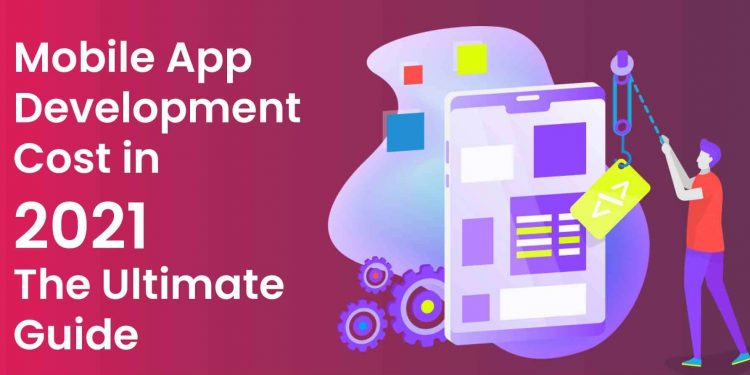The question of ‘how much’ is among the first to be posed when building an app. When it comes to the tech market, the old saying ‘you get what you pay for’ seems logical.
Another response of ‘it depends’ leaves even more questions unanswered. Every software agency knows the metrics and numbers. But why is it different in 2021? Let’s find out.
The State Of Mobile Market This Year And Beyond
The demand for app development is expected to grow in the foreseeable future. The global mobile app market size was estimated at over $154 billion in 2019 and is projected to increase from 2020 to 2027. This tendency is attested by the growing proliferation of smartphones.
The App Store and Google Play have over 5 million available applications. But it’s not only about the number of apps and downloads. The average time of app use is skyrocketing as well. In countries such as the US, smartphone owners spend on average 3,5 hours a day checking their mobile apps.
And as we know, your business should be where your customers are. Hence, the answer is obvious – a mobile-first mindset should be the front and center of your business strategy.
Let’s see how you can pull it off.
How Much Does It Cost To Build An App
According to a recent survey by GoodFirms, you’ll need around $24k to develop a simple app. Solutions with more sophisticated functionality require around $137K. Indeed, the number of features plays a paramount role in estimating the costs. But the total doesn’t boil to functionality.
Cost Driver #1. Project Management Triangle
Whether it’s a standalone product or a mobile application, its quality is always determined by three constraints. These are the scope, time, and cost. These elements are known as the Project Management Triangle.
The sides of the triangle address the following questions:
- What set of features do we need?
- What is the time frame required to implement the project?
- What financial constraints do we have?
All of these elements are closely related and comprise the estimate for the mobile application.
Thus, if you’re pressed for time, the Project Manager will draft in more developers. The more people your team has, the higher the costs are. Therefore, if you ramp up or drive down one aspect of the triangle, you’ll need to adjust other aspects of the project. Otherwise, you risk compromising quality or dragging out the deadline.
But there’s one secret that will help you build a mobile application and save some money along the way. If you are looking to launch a project within tight deadlines and a modest budget, focus on your MVP first.
The Hows and Why Of Minimum Viable Product
An MVP or a Minimum Viable Product is an early version of a product with a minimal set of features. The number of features should be enough to bring value and showcase the application to the end-user.
MVP is built to test hypotheses and verify the viability of the product. The results of MVP testing help understand improvement areas and the exact set of features.
For example, in 2006, Daniel Ek and Martin Laurenson launched a small service. It consisted of just one function, which is streaming music. Today, we know this product as Spotify that collaborates with major recording studios and has an immense audience.
To launch an MVP of your application, you need:
- Contact a software agency for a quote
- Choose the number of platforms (we recommend focusing on one at a time)
- Shortlist the set of must-have features
- Ask a development team to estimate the MVP costs.
This way, you will get a sneak peek of future app development costs and test your business idea.
Cost driver #2. Developer Rates
One of the most evident factors that impact app development total is developers’ hourly rate. Therefore, a company’s location is among the biggest indicators of development costs.
In-house development is traditionally known to have a higher price tag. If you’re located in one of the established tech hubs like the US, be ready to splurge for an app launch. Thereby, most business owners strive to reduce the development costs by delegating the project to outsourcing vendors.
The most popular outsourcing locations are Central and Western Europe, the Baltics, and Eastern Europe. All of these locations have flexible costs, low taxes, and government support of the tech sphere.
Let’s have a look at the average developer costs by region:
- US-based developers charge an average of $50 per hour.
- Canada has the same hourly remuneration among programmers.
- Western Europe developers price their services at $45.
- An app development professional will cost you around $25 to $45 in Eastern Europe.
- Asian countries have the lowest rates of $18-$40 per hour.
Cost driver #3. App complexity
The complexity of your mobile solution is another pointer of estimation. Traditionally, all mobile apps are split into three categories based on their complexity.
These include:
- Simple applications with no API and basic UI features – $20K to $30K for 420+ hours.
- Apps of medium complexity with custom UI features and API – $30K and $40K for 600+ hours.
- Enterprise applications with 3rd-party integrations, custom design, and animation – $40+ for 800+ hours.
Again, it all depends on the location of your team. Also, game applications belong to a different category and are estimated differently.
Cost driver #4. Hidden Costs
Before developing an application, you should factor in additional costs. These are necessary to set up your project for success and ensure a bug-free user environment.
With the neck-breaking competition, marketing costs make up for the majority of the brand’s marketing expenses. These are crucial to addressing the challenges of reaching and retaining app users on the scale.
Typically, the marketing budget includes the following expenditure items:
- App market research costs;
- App store optimization costs;
- App PR outreach costs;
- Influencer marketing costs;
- Viral marketing costs, and others.
Together, these marketing channels contribute to organic app installs. Among other supplementary costs are maintenance expenses. Usually, the app owner allocates around %15 of the initial app development cost on annual maintenance.
App maintenance is a must-have service if you want to prevent app crashes and glitches. Besides, as the audience grows, your solution will need scaling to cope with traffic.
Maintenance refers to the following activities:
- Security updates;
- Continuous bug fixing;
- Audits against new versions of operating systems;
- Performance monitoring;
- New features and enhancements.
As you see, your cooperation with the tech vendor continues even after the product launch. Therefore, we recommend paying due diligence to the choice of your development team. Also, every software development company has different terms of post-release support.
The Final Word
The app development estimate is a patchwork of various cost drivers. As we see, the total doesn’t stem from the developer rates only. To evaluate the ballpark, you need to count on maintenance and marketing costs, app complexity, and time frame.
If you want to be on the safe side and do the math beforehand, consider building an MVP first. An early version of the application will allow you to test your business idea and its value for the end-user.
Follow Techdee for more!





